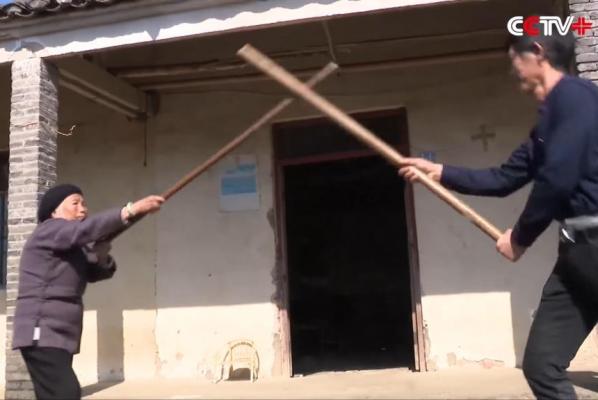America’s improbable pillow king
Topic: COMMUNITY INTEREST

America’s improbable pillow king
Mike Lindell was an insomniac with a crack cocaine addiction when the idea for “the world’s best pillow” came to him in a dream, said writer Josh Dean. Last year, his sales hit $280 million.
As so many great entrepreneurial success stories do, the tale of Mike Lindell begins in a crack house. It was the fall of 2008, and the then-47-year-old divorced father of four from the Minneapolis suburbs had run out of crack, again. He had been up for either 14 or 19 days, trying to save his struggling startup and making regular trips into the city to visit his dealer, Ty. This time, Lindell arrived at Ty’s apartment and received a shock instead: The dealer refused his business. Ty wasn’t going to sell him any more crack until he ended his binge. He’d also called the two other dealers Lindell used and ordered them to do the same.
Many people would be ashamed by this story. Lindell tells it all the time. “I was like, ‘Wow, drug dealers care!’” he says. The moment wasn’t the end of his drug abuse, which started in his 20s when he owned bars and stretched through the early years of MyPillow, the Chaska, Minn., company he founded in 2005 to fulfill his dream of making “the world’s best pillow.” It was, however, his low point. It was when he vowed to get better.
The story is impossible to confirm; Ty isn’t reachable for comment. But it’s become part of Lindell’s legend.
Eight-plus years later, Lindell is sober and phenomenally successful. He quit everything—alcohol, powdered cocaine, and crack—after one final party on Jan. 16, 2009, and presides over an empire that’s still growing precipitously. Last year he opened a second factory, saw sales rise from $115 million to $280 million, and almost tripled his workforce, to 1,500. To date he’s sold more than 26 million pillows at $45 and up, a huge number of them directly to consumers who call and order by phone after seeing or hearing one of his inescapable TV and radio ads.
On this day in early November, he’s just back from a week in New York, spent celebrating the election of Donald Trump. He’s spent the morning catching up on business with various employees who cycle in and out.
“This is my head of IT, Jennifer Pauly,” Lindell says, as a young woman pops in. “She’s a good example of me taking my employees and knowing their skills. I have a housepainter in charge of all my maintenance at the factory. Jennifer is self-taught. Did you ever go to school for IT?”
“I took some Microsoft classes, but that’s basically it,” she says. “I knew how to run a spreadsheet, and that’s why he trusted me with data.”
Lindell laughs loudly. He wears two discreet hearing aids, but everyone says he’s been boisterous forever. “God’s given me a gift to be able to put people in the right position, where their strengths are!” he says.
Next, Heather Lueth, Lindell’s oldest daughter, the company’s graphic designer, comes in to talk about the latest email campaigns. MyPillow is, someone at the company told me, more a family forest than a family tree. Lindell’s brother Corey, who invested at one of MyPillow’s lowest points, is now the second-largest shareholder. His job: doing essentially whatever. Today he’s fixing a grandfather clock.
Larry Kating, director of manufacturing, calls from the new factory in nearby Shakopee to discuss whether or not to make 30,000 pillows for Costco that the store hasn’t asked for yet. Lindell’s vote: Go for it! “You’re always juggling stuff like that,” he says. He’s an unusual manager, governing largely on instinct and by making seemingly wild gambles that he swears are divinely inspired. “We don’t use PowerPoints,” he says. “I end up getting stuff in prayer.”
The pillow came to him in a dream. This was 2003. Lindell owned a pair of successful bars outside Minneapolis and enjoyed the lifestyle a bit too much. He was, he says, a “very functional drug user” with four kids and a nice house. He helped with homework, took the family on vacation, and was a decent father and husband, other than the fact that he used cocaine.
Throughout his life he’d sought the perfect pillow. He never slept well, and things kept happening to worsen the problem. He got sciatica. He was in a bad car accident. He nearly died while skydiving, after nearly dying while motorcycling on his way to skydiving. He got addicted to cocaine.
When he did sleep, it was fitful. “That’s one of the problems with cocaine,” he says, seemingly without irony. One morning, after he woke—or maybe he was still up, he can’t recall—he sat at the kitchen table and wrote “MyPillow” over and over until he’d sketched the rough logo for a product that didn’t exist. When his daughter Lizzie came through and saw him maniacally scribbling the same words over and over like Jack Nicholson in The Shining, she asked what he was doing.
“I’m going to invent the best pillow the world has ever seen!” he exclaimed. “It’s going to be called MyPillow!”
The only way Lindell was ever happy with a pillow was when he found a way to, in his words, “micro-adjust” an existing one. It would typically be foam; he’d yank and pull the filling apart to break up the inside, then arrange and pile up the torn foam like a mouse building a nest, until it was the right height for his neck. Then he’d sleep. By morning, it would be all messed up again.
When Lindell imagined his perfect pillow, it was micro-adjustable but would keep its shape all night. He bought every variety of foam and then asked his two sons to sit on the deck of the house with him and tear the foam into different-size pieces that they’d stuff into prototypes for testing. Day after day they did this, until Lindell settled on a mix of three sizes of foam—a pebble, a dime, and a quarter, roughly. When he stuffed just the right amount of that mixture into a case and shmushed it around to the shape he wanted, it held that shape. It was perfect.
Lindell believed this pillow “would change lives.” He made 300 and went in search of buyers, stopping at every big-box retailer in the area. “I said, ‘I have the best pillow ever made. How many would you like?’” You can imagine how that went.
When someone suggested he try a mall kiosk, Lindell borrowed $12,000 to rent one for six weeks, starting in the middle of November 2004. He sold his first pillow the first day and it was, he says, “the most amazing feeling.” But he’d priced the product too low. His cost was more than the retail price. Plus, his pillow was too big for standard pillowcases.
The kiosk failed. He borrowed more money against the house, and also from friends who weren’t sick of him yet. When desperate, he counted cards at the blackjack table to pay for materials. Eventually, all the casinos within a day’s drive banned him.
The day after he closed the kiosk, he got a call from one of the few customers, who declared, “This pillow changed my life!” This enthusiastic buyer ran the Minneapolis Home + Garden Show, one of the largest for home products in the country. He wanted Lindell to have a booth.
Lindell took 300 pillows (this time they were a standard size) and sold them all. He also got himself invited to take a spot at the Minnesota State Fair and sold well. This was a revelation. There were dozens of home-and-garden shows around the country and countless more fairs. “Those are your testing grounds,” he says. A product that works at the fair works, period.
For the next few years, this is basically how the company operated. Lindell and a few key salespeople drove around in trucks stuffed full of pillows to sell at fairs. They were all effective, but no one’s pitch—sermon was more like it—moved the merch like Lindell’s.
He didn’t give up the drugs. His habit continued, his 20-year marriage broke up, and he lost his house, because he was constantly borrowing money to pay his suppliers. He was barreling toward that moment with Ty, the dealer. Finally, he had one last blowout and quit cold turkey. “I knew if I waited one more day, it would be over,” he says.
Lindell knew the best way to sell his pillow was to present his story live, as he’d been doing at shows since 2005. He decided to make an infomercial. His friends thought he was nuts.
The spot opened with Lindell, in a satiny blue button-down that’s now his trademark garment, saying, “Don’t change that channel, because the next half hour is going to change your life.” He just ad-libbed, saying, for instance, that down pillows were “the worst thing that ever happened to America” and that MyPillow was so malleable that “you can fold it up into little balloon animals.”
The half-hour infomercial aired for the first time on Oct. 7, 2011, at 3 a.m. on the East Coast. The business “went straight up,” Lindell says. He hired everyone he could find—literally off barstools sometimes—and put them to work answering phones or sewing on machines that he stuffed into every corner of a local bus garage lent to him by a friend. In six months, he grew from 50 to 500 employees and sold almost $100 million in pillows.
But Lindell never bothered to figure out his indirect costs. He didn’t really even know what those were. Checks were flying off his desk, more and more of them to pay for the infomercial spots, with no way to know which ones were working and which were just wasted money. He was losing $250,000 a week.
What saved the entrepreneur was FedEx. It hadn’t occurred to him to negotiate shipping rates; he just paid retail with a bunch of different shippers. A company rep came in, asked about his costs, and offered him a rate so low he couldn’t believe it. “Wow,” Lindell said. “You can do this?” Overnight, a red number turned black.
Walking through the factory, Lindell shows off his newest products: a dog bed and a mattress topper. Then he points out a section of the building where returns are handled. Fewer than 3 percent of MyPillow buyers return products, he says, and “less than 1/20th of 1 percent of those return a product twice.” Lindell obsesses over customer satisfaction. If a customer is on hold for more than a few minutes, he gets an alert on his phone. He expects customer emails to be answered within minutes, and if a queue builds up, he gets an alert about that, too. He often handles hundreds of minutes of calls per month himself.
For years, MyPillow was advertised as the cure for almost every sleep problem as well as many health ailments. Ads boasted that using one could alleviate fibromyalgia, joint pain, and restless leg syndrome, as well as promote delta sleep, the most restorative phase of the sleep cycle. Early last fall, Lindell settled with 10 California district attorneys who sued MyPillow for false advertising, arguing that these claims had no scientific backing. The company denied any wrongdoing but agreed to pay $1 million to settle and to remove those claims from any advertising in California.
The California suit was briefly embarrassing but seems to have had no lingering effects. It certainly hasn’t hurt sales or Lindell’s enthusiasm. The new factory could run faster and soon will, he says. MyPillow could push production up to more than 85,000 pillows a day. To get there, he says, all he needs to do is buy more media. He says that what he calls the “tsunami”—the next boom in sales, the one that will lead to $1 billion—started last fall. The election was just another harbinger.
Two women who did merchandising for the Trump campaign have stopped by for a tour and have been tailing our group. They seem in awe of the scale and efficiency here, from an essentially flat and somewhat chaotic-seeming organization ruled by a single outlandish man.
What’s the largest sales month you’ve ever had? one asks.
“MyPillow is always the biggest we’ve ever been on the day you’re standing here,” Lindell replies.
Posted by tammyduffy
at 12:01 AM EDT










